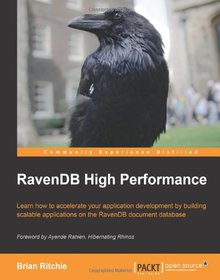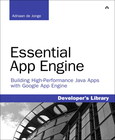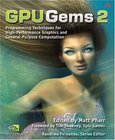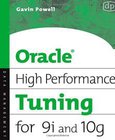RavenDB High Performance

Book Details:
| Publisher: | Packt Publishing |
| Series: | Packt , High Performance |
| Author: | Brian Ritchie |
| Edition: | 1 |
| ISBN-10: | 178216698X |
| ISBN-13: | 9781782166986 |
| Pages: | 124 |
| Published: | Aug 26 2013 |
| Posted: | Nov 19 2014 |
| Language: | English |
| Book format: | |
| Book size: | 1.79 MB |
Book Description:
Learn how to accelerate your application development by building scalable applications on the RavenDB document database Overview Learn how to build your application for scalability and high availability Make highly interactive applications that support client-side notifications, faceted search, search suggestions, and more Take advantage of advanced RavenDB APIs to make your application fly In Detail RavenDB is an exciting technology that challenges developers to reconsider their old ways of thinking about databases. In this day and age, Internet-scale applications require this fresh perspective. RavenDB High Performance moves beyond the basics and guides you through building scalable applications using the rich features and extensibility of RavenDB. RavenDB High Performance cuts through the noise and focuses on the key information you need to build scalable applications on the RavenDB document database. The book discusses every aspect of building a high performance system, from modeling your data to deploying it in a clustered environment. Examples are provided to make this information easy to apply to your specific application scenario. Beginning with the NoSQL movement, RavenDB High Performance delves into the forces pushing developers beyond the traditional relational database solutions. From there, the book focuses on the design and development of web-based applications on RavenDB. It gives clear advice and examples to guide the reader through this new and exciting technology. Data modeling through documents is discussed in detail. This understanding is critical for building clean code and scalable applications. Once this foundation is established, the author focuses on key APIs that optimize data access and give end users great experiences. Scaling out and high availability techniques are also discussed in detail. RavenDB High Performance brings together the resources you need for building scalable applications on RavenDB in an easy to understand and use format. Advice, diagrams, and code will help you quickly understand the concepts that you will apply to your next application. What you will learn from this book Model data using documents Utilize the best APIs for optimizing data access Monitor a RavenDB instance Detect performance problems and tune your configuration Scale out to multiple nodes using sharding Replicate to a relational database for reporting Distribute load using read striping Create high availability through multi-node replication Use Failover Clustering for high availability Deploy RavenDB to the cloud Create client-side notifications from RavenDB using SignalR Extend the RavenDB server with your own custom code Approach RavenDB High Performance is comprehensive yet concise tutorial that developers can use to maximize the efficiency and optimization of RavenDB itself. Who this book is written for This book is for developers & software architects who are designing systems in order to achieve high performance right from the start. A basic understanding of RavenDB is recommended, but not required. While the book focuses on advanced topics, it does not assume that the reader has a great deal of prior knowledge of working with RavenDB.
Download Link:
Related Books:
Essential App Engine
Building High-Performance Java Apps with Google App Engine
In Essential App Engine, Adriaan de Jonge shows Java developers how to rapidly build complex, productionquality, performance-driven cloud applications with Google App Engine. Using a start-to-finish case study and extensive Java example code, De Jonge covers the entire lifecycle, from application design and data modeling through security, testing, and deployment. De Jonge introduces breakthrough techniques for creating applications that respond within two seconds, even on cold startup, and allow server responses in hundreds of milliseconds or less throughout the rest of the session. He also demonstrates how to avoid common mistakes that can dramatically reduce cloud application performance and scalability. He thoroughly covers state-of-the-art user...
GPU Gems 2
Programming Techniques for High-Performance Graphics and General-Purpose Computation
One of the biggest developments in computer hardware in the last few yearshas been the introduction of a new generation of Graphics Processing Units(GPUs) with more power and flexibility than the CPU. Not only have GPUsrevolutionized graphics programming, now developers are starting
to use themwherever substantial processing power is required, for instance in financial andmedical applications. This use of GPUs for more general purposes is referredto as General Purpose computation on GPUs(GPGPU).GPU Gems 2 continues the format of the first edition, with forty six chaptersthat detail cutting-edge programming techniques from some of the world's topexperts. It goes beyond the first volume, however, in presenting in book formfor the first time methods fo...
Oracle High Performance Tuning
For 9i and 10g
There are three parts to tuning an Oracle database: data modeling, SQL code tuning and physical database configuration.A data model contains tables and relationships between tables. Tuning a data model involves normalization and de-normalization. Different approaches are required depending on the application, such as OLTP or a Data Warehouse. Inappropriate database design can make SQL code impossible to tune. Poor data modeling can have a most profound effect on database performance since all SQL code is constructed from the data model. Poorly written SQL code is often a culprit of performance problems and is expensive to rectify. However, tuning of SQL code is generally cheaper than changing the data model. SQL code tends to be contained inside inde...
2007 - 2021 © eBooks-IT.org



